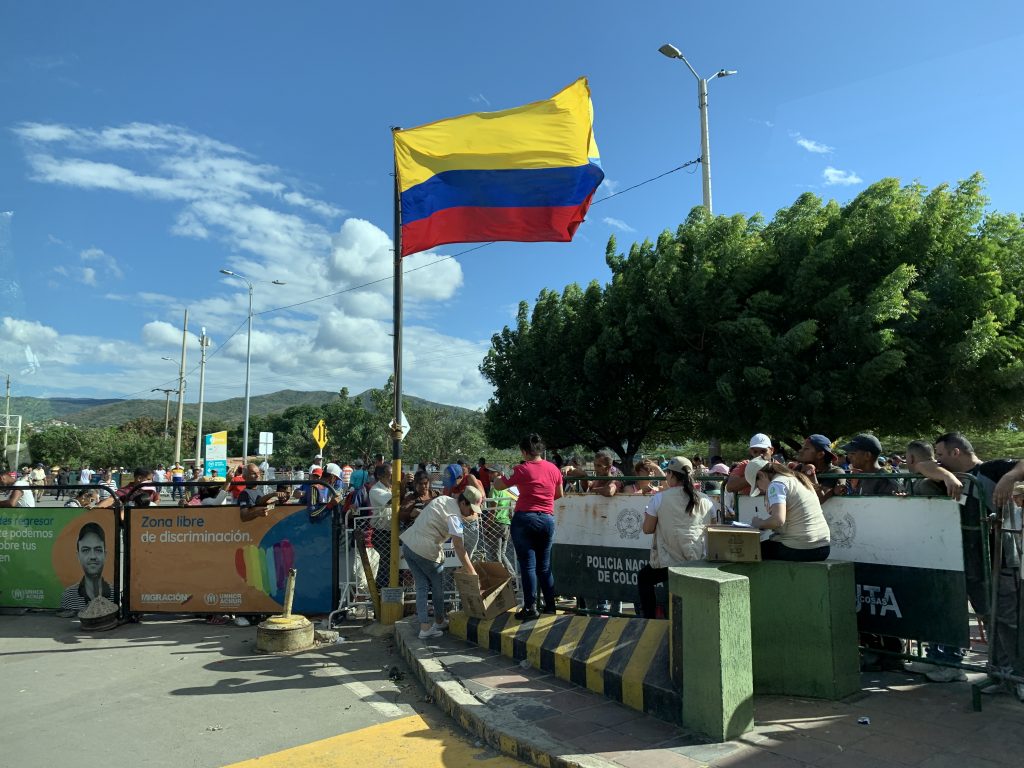Fighting COVID-19 side by side with migrants
In a crisis where we are all explicitly told to “stay home” to help contain the spread of this virus, how do those who have been displaced from their homes comply?
By Rebecca Scheurer, Walter Cotte Thu, Apr 9, 2020

Since the COVID-19 crisis began, there are now more than 1.4 million cases worldwide in about 185 countries and territories; more than 83,000 people have died – and all of these numbers are climbing. No region is immune.
Every day we see more data that this highly contagious virus does not discriminate, however its impact can be highly discriminatory. Certainly, the elderly or those with compromised immune systems are at high risk – but also, an already extremely vulnerable and overlooked population: migrants and displaced. The latest tally suggests our world is home to 258 million international migrants. While not all of these people are vulnerable, 70 million have been forcibly displaced by conflict and violence – both within their countries and cross-border – and an average of 24 million are displaced by disasters and effects of climate change every year. In a crisis where we are all explicitly told to “stay home” to help contain the spread of this virus, how do those who have been displaced from their homes comply? When you no longer have a home, “sheltering in place” is simply not an option, and this challenge further compounds your existing vulnerabilities as a migrant.
This past January, the Adrienne Arsht-Rockefeller Foundation Resilience Center (AARFRC) and the International Federation of the Red Cross and Red Crescent Societies (IFRC) made a joint-visit to the border of Colombia and Venezuela, to see firsthand, the humanitarian crisis that has been ongoing in the region for nearly five years – and it’s the largest population movement crisis ever seen in the Americas.
We visited the Simón Bolivar bridge, where tens of thousands of migrants from Venezuela cross daily, to see where migrant journeys begin. At this same bridge is where we see the first of IFRC’s Humanitarian Service Points (HSP) – lifelines for migrants which provide essential services like healthcare, water and sanitation, psycho-social support, and critical (sometimes lifesaving) guidance and information for the journeys that lie ahead for these individuals or groups walking hundreds of miles away from what they used to call home. With support from hundreds of volunteers, Red Cross Societies including Colombia and Ecuador have been able to station – and at times be mobile to adjust to migrant paths – these HSPs from border-to-border to “walk with migrants” along their strenuous journeys.
Fast forward three months: migrants are still crossing the Simón Bolivar bridge every day, people displaced by conflict and situations of violence are still in camps in the Mediterranean, migrant workers have lost their livelihoods, and the entire world is facing a pandemic.
How do we reduce vulnerability of the most vulnerable? How do we foster inclusion and reduce xenophobia in a time of social and physical distancing?
For starters, we can continue to meet migrants where they are. The HSPs are well positioned to raise awareness among migrants and host communities about COVID-19, and to provide migrants with practical information on how to access healthcare and appropriate treatment if infected. Information is power and at the community level, reaching and informing migrants is equally as important as it is for the wider public. This is imperative from the perspective of protection and basic human-rights, and there is a clear public health rationale to extend all COVID19 outbreak readiness and response measures to everyone to ensure full coverage, regardless of citizen status.
As a universal tool, social media reaches everyone with access to mobiles phones or computers. Ensuring migrants are aware of reliable sources, they can access accurate and real-time reporting and guidance. This has been true for migrants as they make their journeys – the Atlantic Council’s Digital Forensic Research Lab monitors the information environment in order to produce public reporting focusing on disinformation narratives targeting migrant populations. IFRC and its network of 192 country-level national societies and 13 million volunteers are doing the same, pushing out trustworthy and accessible information to migrants and host communities included as a vital activity to reduce the risks of COVID-19. This information is delivered via digital and social media platforms, and often targets at-risk communities where people gather, like places of worship, community centers and Humanitarian Service Points.
It is important however to balance raising awareness of the risks that migrants may face with ensuring that xenophobic attitudes and social stigma of people from certain nationalities being associated with COVID-19 are not promoted. Working together, AARFRC and IFRC can help counter xenophobia by leveraging their combined efforts and affiliated networks to change the narrative and encourage social inclusion around migration. This vision will bring us closer to a resilient world where societies are safer, healthier, compassionate, more inclusive, and flourish through diversity.
In uncertain times humanity historically comes together to embrace our commonalities. In the case of COVID-19, we can achieve more together if we include migrants as active participants in our efforts to quell the spread and impact of this disease.
Walter Cotte is Regional Director for the Americas, International Federation for Red Cross and Red Crescent Societies
Rebecca Scheurer is Director, Humanitarian Initiatives, Adrienne Arsht-Rockefeller Foundation Resilience Center